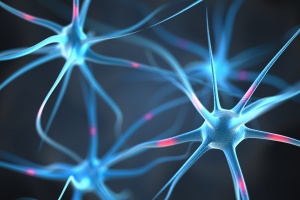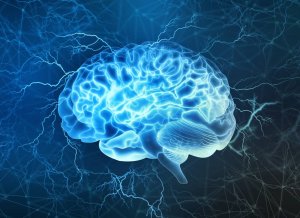How Do Drugs and Alcohol Affect the Brain and Central Nervous System?
What Do Alcohol and Drugs Do to Your Brain?
In simplest terms, the brain comprises a network of neurons to process and transmit information. Drugs and alcohol can interfere with the way these brain cells function, altering the way they send, receive, and process signals.1
Alcohol and/or drug use—including heavy and chronic use as well as processes involved in overdose and withdrawal—can impact a host of neurological and behavioral conditions. For example, substance use can alter feelings, perceptions, thought processes, and behavior.2 It can also lead to various conditions involving the central nervous system, including everything from headaches and stroke to seizures and cognitive disorders.3 Plus, over time, substance use can even change the brain in ways that contribute to addiction development and make it more challenging to maintain abstinence.4 
That said, the severity and duration of these brain-related impacts vary considerably. While some effects can be persistent or even permanent, others may improve after a period of abstinence and appropriate medical attention, while still others disappear quickly with sobriety.2
It’s important to note that the relationship between substance misuse and various CNS conditions is often complicated by use of more than one substance and/or underlying health conditions. However, the following content provides an overview of some of the more common neurological conditions linked to substance misuse, along with insights about key substances associated with each.
Cognitive and Behavioral Disorders
Substance use has both immediate and long-term effects on brain networks that impact behavior, memory, and cognition. Shortly after use, effects can include altered consciousness, impaired memory, disinhibition, euphoria, inattention, altered judgement, and more. Meanwhile, long-term use can lead to impairments across multiple cognitive domains, including memory, attention, and executive function. Additionally, people can experience cognitive and behavioral issues that result from more indirect substance-related mechanisms, such as head trauma, infections, malnutrition, and combined polysubstance effects.3
Common substances associated with cognitive and behavior dysfunction include:
- Alcohol. Alcohol misuse can lead to several acute and chronic conditions including:
- Wernicke-Korsakoff Syndrome. Wernicke-Korsakoff syndrome (WKS) is one condition comprising two different stages: Wernicke encephalopathy and Korsakoff syndrome.5,6 Caused by thiamine deficiency often seen with excessive alcohol consumption, Wernicke encephalopathy is an acute degenerative brain disorder that’s considered a medical emergency.7 If Wernicke encephalopathy goes untreated, it can progress to Korsakoff syndrome—a long-lasting and potentially permanent memory disorder that can lead to coma and death.3,5,6,8
- Pellagra. With symptoms including gastrointestinal lesions, rash, and neurobehavioral/cognitive symptoms (e.g., irritability, insomnia, dementia, delirium, delusions, hallucinations, and memory impairment), pellagra is a result of nicotinic acid deficiency, which can be related to chronic alcohol use and subsequently diminished nutrient absorption. While prompt treatment can lead to recovery within hours or days, untreated pellagra is fatal.3
- Alcohol-related dementia. A form of progressive cognitive decline, alcohol-related dementia isn’t attributed to other causes such as primary dementia and trauma.3
- Benzodiazepines. Long-term benzodiazepine use can lead to significant cognitive impairments in: sensory processing, problem-solving, attention/concentration, motor control/performance, nonverbal, verbal, and working memory, etc.9 While many cognitive areas improve with abstinence, some people may experience more persistent cognitive impairment, even after benzodiazepine discontinuation.9,10
- Cocaine. Among other cognitive disorders, cocaine use can cause acute or chronic paranoia, a shorter attention span, and impaired working, visual, and verbal memory. Chronic use can also lead to significant impairment in cognitive function.3
- MDMA. Use of MDMA (i.e., 3,4-methylenedioxy-methamphetamine, aka ecstasy) can lead to confusion, distorted perception, hyperactivity, long- and short-term memory deficits, and impaired visuospatial functions.3,11
- Amphetamines. Amphetamines can cause psychomotor agitation, pressured speech, and hyper-alertness. Plus, misuse may lead to changes in brain structure that can adversely impact mood regulation and increase the risk of certain psychiatric conditions including psychosis, anxiety, and mood disorders.3 Chronic amphetamine use is also associated with deficits of cognitive skills such as pattern recognition, verbal fluency, etc.12
- Methamphetamine. Methamphetamine misuse can have adverse neurological effects and can lead to certain types of brain injury and cognitive impairments (e.g., memory, attention, and decision-making skills). Additional deficits include those related to memory, attention, and executive functions.13 Based on data from the National Institute on Drug Abuse (NIDA), long-term meth effects can also include psychosis (including hallucinations, paranoia, and repetitive motor activity) along with changes in brain structure and function, increased distractibility, aggressive or violent behavior, mood disturbances, and more.14
- Cannabis and synthetic cannabinoids. Adverse cannabis effects can include depression, unease, and delusions along with deficits in attention, memory, and sense of time. Chronic long-term use is also associated with various neuropsychological impairments (e.g., deficits in executive function, learning, decision making, and risk-taking). Adolescent use of marijuana is particularly troubling, as even once-weekly use during this time can lead to long-term neurocognitive dysfunction and damage, including a risk of impaired brain development.3
- Heroin and other opioids. Opioid use is associated with deficits of strategic planning and decision-making, and chronic opioid use is linked to deficits of executive functioning.3,15 And according to a paper published in the Addiction journal, opioid use disorder is associated with various cognitive disorders that can endure even through abstinence.15 Research related to the specific impact of heroin (a type of opioid) on cognitive disorders has shown mixed results ranging from mild to moderate dysfunction. However, at least one study revealed significant heroin-related deficits in visual memory tasks, impulsivity, and risky decision-making.3
- Hallucinogens. Hallucinogen use can create significant changes in mood, perception, and cognition; deficits in word recall and working memory; and acute effects including panic attacks, psychotic symptoms, and other unpleasant experiences (i.e., bad trips). Additionally, some users report an altered sense of reality, depersonalization, and/or transcendental experiences.3
- Phencyclidine (PCP). PCP can produce symptoms including agitation, paranoia, delusions, and hallucinations along with lack of motivation to perform purposeful activities (i.e., avolition), catatonia, and loss of ego boundaries. Additionally, some studies claim that permanent neuropsychiatric changes are also possible.3
- Inhalants. NIDA data reveals that the neurotoxic effects of prolonged inhalant misuse can lead to deficits in cognition, movement, vision, and hearing, with cognitive abnormalities ranging from mild impairment to severe dementia.16 In particular, toluene, which is found in several types of glue, paint, and solvents, is linked to central nervous system damage.3
Seizures
A result of both withdrawal and drug toxicity, seizures can be linked to multiple substances including:
- Alcohol. The majority of seizures related to alcohol use involve withdrawal or neurological injury that occurs in conjunction with chronic alcoholism (e.g., traumatic brain injury, infection, hematoma, and alcohol-related degeneration of brain tissue known as encephalomalacia).3
- Benzodiazepines. Although benzodiazepines have been associated with paradoxical toxic reactions that include seizures among their symptoms, most seizures in those with benzodiazepine use disorders occur in relation to withdrawal.3
- Cocaine. While any route of cocaine administration can lead to a seizure (which occurs in 1% to 9% of users), most new-onset seizures are related to either the intravenous use of cocaine hydrochloride or smoking crack (i.e., freebase cocaine).3
- MDMA. While MDMA is associated with an increased risk of seizures, hyponatremia (a situation of low blood-sodium levels) and excessive fluid intake are more commonly associated with MDMA-related seizures.3
- Methamphetamine. Seizures associated with smoked methamphetamine are usually accompanied by hypertension, cardia arrhythmia, agitation, psychosis, and/or fever.3
- PCP and hallucinogens. While seizures aren’t an expected toxic result of hallucinogens, they may be experienced after high-dose use.3
- Inhalants. Acute inhalant intoxication is associated with toxicity-related seizures.3
Stroke
Substance use can contribute to the development and progression of stroke, even in people without other vascular risk factors. More than 85% of strokes are ischemic strokes, which feature obstructed or reduced blood flow to the brain, which may then lead to a lack of oxygen and subsequent brain injury.3 That said, the other type of stroke—i.e., hemorrhagic—may be more common in relation to some substances such as amphetamines.17
Substances most associated with stroke include:
- Alcohol. Based on data from a large, international study of stroke risk factors, moderate and high consumption of alcohol (i.e., 7 drinks or more per week) have been associated with an increased risk of stroke.18 Plus, heavy consumption can lead to complications (e.g., cardiac disease, platelet dysfunction, synthetic liver dysfunction, high blood pressure, accelerated atherosclerosis, and more) that then increase stroke risk.8
- Cocaine. Cocaine increases the risk of several cardiovascular and cerebrovascular complications. It can lead to coronary artery vasoconstriction, hypertensive surges, inflammation of the arterial walls, and increased platelet aggregation—all of which can lead to various types of strokes. Additionally, a sharp rise in the prevalence of both ischemic and hemorrhagic stroke mirrors the introduction of crack cocaine in the ‘80s, suggesting that crack may increase stroke risk.3
- Amphetamine. Various amphetamines (including methamphetamine) can cause excitability, heightened alertness, and euphoria in conjunction with increased sympathetic nervous system tone. This may in turn lead to a rise in blood pressure and heart rate, as well as instances of arrhythmia, vasospasm, and vasculitis. These factors can then increase the risk of stroke.3
- MDMA. Within the setting of a hypertensive crisis and severe hyperthermia in association with MDMA, both hemorrhagic and ischemic strokes are possible.3
- Heroin. Both hemorrhagic and ischemic strokes have been associated with heroin use. Potential mechanisms include direct toxicity, adulterants, overdose-related hypotension and respiratory depression with hypoxemia, and more. That said, injected and snorted heroin has caused stroke without the presence of other risk factors.3 Additionally, heroin use via injection is linked to a risk of various cerebrovascular complications, including both types of stroke.15
- Hallucinogens. Severe hypertension caused by LSD can lead to vasoconstriction in systemic and cerebral arteries. This in turn can cause occlusion and narrowing of the intracranial vasculature, ultimately leading to ischemic stroke.3
Neuromuscular Disorders
Neuromuscular disorders affect the muscles, nerves, and spinal cord. When it comes to substance use, these disorders can be acute or chronic and can: be associated with substance-related nutritional deficiencies or a related inflammatory response, occur secondary to direct substance toxicity, or be caused by another mechanism. Additionally, those experiencing intoxication and withdrawal may fall asleep for prolonged periods of time in unusual positions, resulting in compression neuropathies.3
Substances associated with neuromuscular disorders include:
- Alcohol. A form of progressive neurological dysfunction associated with chronic alcohol exposure, alcoholic neuropathy is characterized by pain, burning, and tingling typically in the feet and legs.19,20 Additionally, chronic excessive alcohol use can lead to alcoholic myopathy, which can result in pain, weakness, tenderness, and swelling in the muscles near the body’s midline.21,22 Chronic, heavy alcohol use is linked to progressive loss of muscle strength, and persistent drinking can lead to cardiomyopathy, which affects the heart muscle.3
- Heroin. Injection heroin use is associated with various nerve and muscle disorders including Guillain-Barre syndrome, which features an increasing pattern of sensory symptoms and weakness. Heroin-related rhabdomyolysis (i.e., a medical emergency characterized by the breakdown of skeletal muscle tissue and the release of muscle proteins into the bloodstream) can also lead to neuropathy.3
- Inhalants. “Glue-sniffers neuropathy” is a severe form of neuropathy that affects people who sniff N-hexane, a hydrocarbon typically found in glues and roofing materials. It can lead to a severe neurological condition featuring partial or complete paralysis. Additionally, sniffing nitrous oxide can lead to myelopathy, which is a type of spinal cord disorder.3
Movement Disorders
While some substances can directly lead to movement disorders, withdrawal from substances can also trigger them. Generally speaking, movement disorders are either hyperkinetic (featuring excessive or abnormal involuntary movements) or hypokinetic (characterized by slowed or reduced movements and a reduction in voluntary control).3
Substances related to movement disorders include:
- Cocaine. Cocaine can worsen existing movement-involved conditions, and it’s associated with several hyperkinetic movement disorders such as posturing and muscle spasms, tremors, and abnormal involuntary movements that are sometimes referred to as “crack dancing.” Cocaine intoxication is also associated with “punding behaviors,” which are a series of repetitive, involuntary movements and behaviors that are purposeless and unique to each individual. Examples include repetitive sorting and arranging, continuous handwashing, counting and recounting, etc.3
- Amphetamines. Acute intoxication with amphetamines such as meth and MDMA can result in tremor, acute involuntary muscle movements/spasms, worsening of tics, and various unpredictable, rhythmic, and repetitive motions (i.e., dyskinesias). Additionally, acute amphetamine intoxication is linked to punding, and amphetamine use is associated with teeth grinding/gnashing and jaw clenching (i.e., bruxism) and repetitive tongue protrusion.3
- Heroin and other opioids. In people whose heroin use involves heating the drug on an aluminum base before smoking or inhaling the vapors, a rare and severe neurological disorder called cerebral and cerebellar spongiform leukoencephalopathy can develop. The disorder can include tremors, movement symptoms that resemble Parkinson’s disease, and abnormal, involuntary, and hyperkinetic movements. In addition, opioids are associated with myoclonus, which features sudden, brief, and involuntary muscle twitches affecting a specific muscle or muscle group.3
Traumatic Brain Injury
Thanks to related disinhibition, impulsivity, and impaired executive function, drug and alcohol use is often associated with risk-taking behaviors, the latter of which predispose people to injury and physical trauma such as automobile crashes, violence, falls, burns, etc.23 This trauma, then, can dramatically impact the spinal cord, brain, nerves, and more.3
Alcohol is often implicated in traumatic brain injuries. In fact, insights from the Substance Abuse and Mental Health Services Administration reveals that up to 75% of patients with a traumatic brain injury tested positive for alcohol at the time of hospital admission, and approximately 50% were intoxicated.2
However, any substance that creates mental cloudiness, disinhibition, and impaired functioning can be associated with trauma and traumatic brain injury. For example, one review indicated that a single dose of benzodiazepines can significantly impair driving performance.24 In fact, the risk of driving while on benzodiazepines is similar to the risk of driving with a blood alcohol content (BAC) between 0.050% and 0.079%. (Someone with a BAC of 0.08% is considered legally impaired and may be arrested for driving under the influence [DUI].)25 Similarly, MDMA decreases a person’s ability to perceive and predict motion. So skilled and potentially complex tasks such as driving a motor vehicle can be impaired.26
Treatment for Neurological Effects of Drug and Alcohol Misuse
While some central nervous system effects are permanent, others may lessen or resolve with medical and addiction treatment paired with abstinence. Long-term health improvements may benefit from treating both the underlying substance use disorder and the associated neurological conditions.
Treatment for drug and alcohol use disorders is tailored to the unique needs of each individual. The various levels of care include:27
- Medical detox.
- Inpatient rehab.
- Outpatient programs—including Intensive Outpatient Programs (IOPs), Partial Hospitalization Programs (PHPs), and telehealth care.
American Addiction Centers treatment facilities provide the entire spectrum of care, and they’re in-network with myriad insurance providers and scattered across the country for easy access. To explore AAC treatment options, reach out to connect with an AAC admissions navigator or complete the insurance verification form. Staff is available 24/7 to answer treatment questions, discuss payment options, and help you or a loved one take the first steps toward recovery today.

